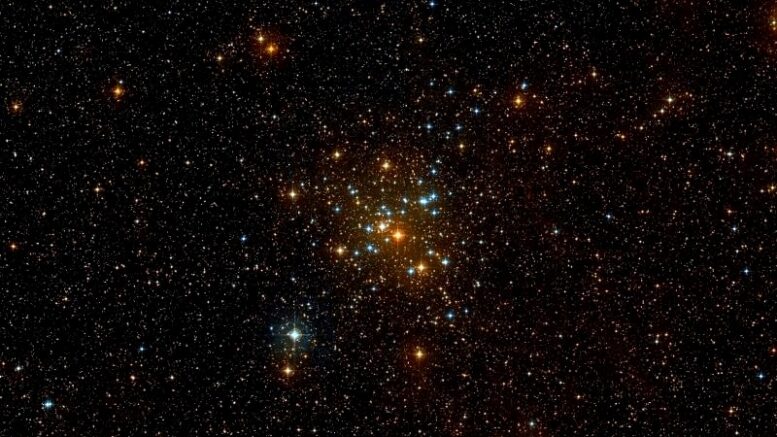Messier 41 (M41) is a bright open star cluster located in Canis Major constellation. It lies near Sirius, the brightest star in the sky. Messier 41 occupies an area of 38 arc minutes in apparent diameter, roughly the size of the full Moon, with an estimated age between 190 and 240 million years. The cluster is detached from the surrounding star field with strong concentration at the center.
| Description | |
| Visible From Pacific Northwest | December to February |
| Best Time To Observe | January |
| Minimum Size Of Viewing Device | Small Telescope |
| Object Type | Open Cluster |
| Designations | Messier 41, M41, NGC 2287, Collinder 118, C 0644-206, OCl 597.0, MWSC 0978 |
| Right Ascension | 06h 46.0m |
| Declination | -20°46′ |
| Constellation | Canis Majoris |
| Number Of Stars | 100 |
| Apparent magnitude | +4.5 |
| Apparent dimensions | 38′ |
| Object Radius | 12.5 light years |
| Distance From Earth | 2,300 light years |
History
Messier 41 was discovered by the Italian astronomer Giovanni Battista Hodierna before 1654 and possibly seen by Greek philosopher and scientist Aristotle around 325 BC. It is uncertain whether the philosopher saw the cluster, a comet, or part of the Milky Way near the star d Canis Majoris.
English astronomer John Flamsteed discovered the open cluster independently on February 16, 1702, as did the French astronomer Guillaume Le Gentil in 1749.
Charles Messier added the cluster to his catalogue on January 16, 1765, describing it as a “cluster of stars below Sirius, near Rho Canis Majoris,” adding that “this cluster appears nebulous in an ordinary telescope of one foot [FL]; it is nothing more than a cluster of small stars.”
Locating M41 In The Sky
M41 is very easy to find as it lies about 4 degrees south of Sirius, the Dog Star, one of the nearest stars to Earth. M41 can be seen in the same binocular field with Sirius and Nu-2 Canis Majoris, an evolved orange giant with a visual magnitude of 3.95. The cluster forms a triangle with the two stars. In clear, dark skies, it is visible to the naked eye.

Viewing M41
The cluster is relatively loose and can be resolved in a small telescope. It is best observed at low magnifications. 10×50 binoculars show a large faint patch of light, while larger binoculars resolve some of the stars in the cluster. Small telescopes, 4-inch, resolve about 50 stars, while 6-inch and 8-inch telescopes show many more fainter members. The best time of year to observe M41 is in the months of December, January and February.
Photographing M41
In the winter, Messier 41 can indeed be a target that one can indeed hit with just a DSLR, auto guiding, and a larger telescope. Being an open cluster, autoguiding is crucial to be on point to prevent the stars from trailing. Accurate guiding will assist with star crispness. Filters will help bring out the color, and it should not take too much time to obtain a good image of M41.
https://www.cloudynights.com/topic/567562-m41-open-cluster/
http://www.astrophoton.com/M041-2.htm
http://cs.astronomy.com/asy/m/starclusters/488774.aspx
Sources And Further Reading
Descriptions of all of Messier Objects can be found here.
https://www.messier.seds.org/m/m041.html
https://freestarcharts.com/messier-41

Be the first to comment on "Messier 41"